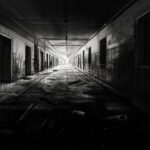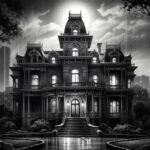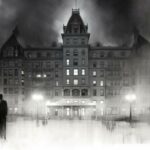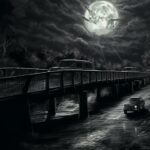Table of Contents
San Diego’s sunny disposition belies its shadowy corners where whispers of the past linger. Adventurers seeking chills can explore the city’s haunted havens, each brimming with tales of spectral sightings and eerie occurrences. This guide beckons the brave to encounter the mysterious side of San Diego, where history’s echoes refuse to fade.
If you are doing any kind of paranormal investigation here, you might want to take a look at our ghost hunting equipment list. Locations like this get a reputation because they are high activity and you don’t need much to see for yourself.
San Diego
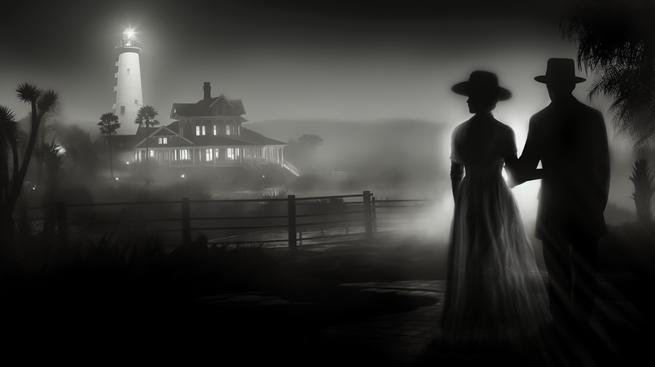
San Diego, a city famed for its idyllic weather and vibrant culture, also harbors a spine-chilling past that whispers tales of the supernatural. The city’s haunted history adds a ghostly layer to its sun-soaked streets, beckoning the brave to explore its eerie side.
At the heart of San Diego’s ghostly lore stands the William Heath Davis House, the oldest structure in downtown San Diego. Built in 1850, it served as a home to prominent figures but never to its namesake. Its walls, steeped in history, have witnessed numerous deaths when it doubled as a hospital. Visitors often report sightings of a Victorian woman and a couple clad in period attire, hinting that the house’s former inhabitants might still be lingering.
Perched on the coastline, the Old Point Loma Lighthouse has stood as a beacon for more than two centuries. Since its first lighting in 1855, the lighthouse has been the subject of numerous ghostly encounters. The heavy footsteps and cold spots near the spiral staircase lead many to believe that the spirits of past keepers, like Captain Robert Decatur Israel, or the explorer Juan Rodriguez Cabrillo, still roam its rooms, ensuring the lighthouse never loses its guiding light.
Afloat in history, the Berkeley Steam Ferry Boat now serves as the San Diego Maritime Museum’s headquarters. Its decks, which once carried passengers across the San Francisco Bay, now echo with the presence of a man in a fedora, possibly the spirit of John O Norbom, a victim of a tragic explosion in 1911. His spirit is said to revisit the boat, a testament to the vessel’s storied past.
No tour of haunted San Diego is complete without a visit to the Whaley House, dubbed America’s #1 Most Haunted House. This mansion holds a dark repertoire of death, suicide, and mystery within its walls. Its historical significance as a former courthouse and theater draws many, but it’s the ghostly encounters with figures like Violet Whaley and Yankee Jim Robinson that truly send shivers down the spine.
Finally, the Horton Grand Hotel stands as a resurrected tribute to the Grand Horton and Brooklyn Kahle Saddlery Hotels. Rebuilt brick by brick, it maintains its grandeur alongside persistent paranormal guests. The tale of Roger Whittaker, a gambler who met his end in room #309, leaves guests pondering the flickering lights and nocturnal noises that permeate the hotel.
San Diego’s haunted history casts a long shadow over its sunny image, offering a supernatural good time for those drawn to the darker side of this city. With every creaking floorboard and every unexplained chill, the city tells its ghostly tales, proving that in San Diego, the past is never truly gone.
I was wandering through the Gaslamp Quarter in San Diego when I felt a chill, even though it was a warm night. They say the old buildings here are haunted, and I swear I saw a shadow in the corner of my eye that looked just like a lady from way back in the day.
William Heath Davis House

In the heart of San Diego’s historic Gaslamp Quarter stands the William Heath Davis House, also known as the Davis-Horton House. This venerable structure holds the title of the oldest surviving wooden structure in the city and has a storied past that sends shivers down the spines of history buffs and ghost hunters alike.
The house first took root in San Diego’s soil back in 1850, when William Heath Davis purchased eight East Coast ‘saltbox’ style homes and had them shipped around Cape Horn to San Diego Bay. Despite Davis’s grand vision, his plans for the downtown area initially fell through. However, Alonzo Horton arrived in 1867, and with a keen eye for opportunity and real estate, he sparked San Diego’s first ‘boom’ from the ashes of Davis’s dreams. Horton and his wife called the Davis House their temporary home while their mansion was under construction.
Today, the Davis-Horton House stands as a silent witness to the city’s evolution, having moved three times before settling in its current location in 1984. The house has lived many lives: it served as a makeshift hospital, military officer’s barracks before the Civil War, and even a hiding place for an alleged World War II German spy.
But it’s the house’s spectral tenants that have truly cemented its place in San Diego’s haunted history. Visitors and staff have reported unexplained phenomena that suggest the house is more than just a collection of old rooms and creaky floorboards. Lights flicker and turn on of their own accord, ropes meant to block doorways are found displaced, and chilling breezes cut through still air. The sight of a Victorian woman, seen only from the waist down, lingers near the child’s room, and a medicine chest that refuses to stay open are just a few of the eerie occurrences that fuel the house’s reputation as the most haunted in the Gaslamp Quarter.
The ghostly presence felt by many has led to the Davis-Horton House being a hotbed for paranormal tours and investigations. It’s a place where the past refuses to die, and the echoes of yesteryear are as tangible as the artifacts on display. With its colorful history and resident apparitions, the William Heath Davis House is a cornerstone of San Diego’s haunted heritage and a must-visit for those who dare to walk its haunted halls.
I was chillin’ at the old Davis-Horton House in San Diego when the lights started freaking out, and I swear I saw the ghost of a lady floating around without her top half – spookiest thing ever!
Old Point Loma Lighthouse
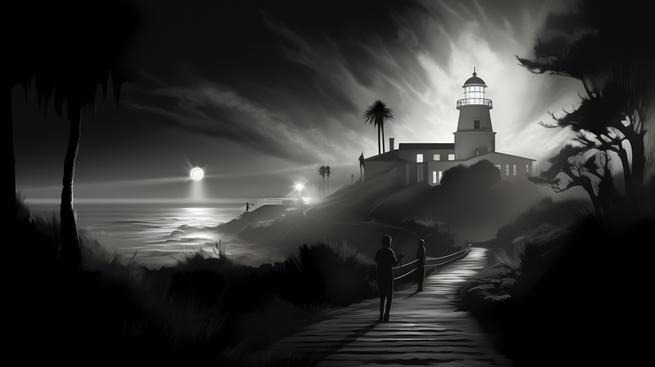
Perched at the entrance of San Diego Bay, the Old Point Loma Lighthouse stands as a beacon to a bygone era. Erected in 1855, it soared to prominence as the highest lighthouse of its time. Yet, after 36 years of guiding mariners, it was decommissioned due to persistent fog obscuring its light.
Despite its retirement in 1891, the lighthouse refused to fade into the annals of history. A period of neglect nearly led to its demolition, but it was instead transformed into a museum, preserving its legacy. The surrounding land was christened the Cabrillo National Monument to honor the explorer Juan Rodríguez Cabrillo, who charted the West Coast in 1542.
War painted the lighthouse in camouflage green, repurposing it as a signal tower during World War II. Post-war, it was restored to its original hue, and the 1980s saw it decked out in period decor, complete with a lush garden and a functional water system.
But the Old Point Loma Lighthouse hides more than just historical treasures; it harbors spectral residents. Visitors report phantom footsteps from above and chilling cold spots near the spiral staircase, believed to be the restless spirits of its former keepers. The most eerie presence is that of a dark apparition, possibly Captain Robert Decatur Israel, the last keeper, whose dedication to duty seems to transcend death.
A stone’s throw from the Point Loma Rosecrans National Cemetery, some suggest the cemetery’s misty figures and disembodied voices wander over to the lighthouse, adding to its ghostly allure. Whether the spirits are disgruntled over the lighthouse’s premature closure or simply attached to their earthly roles, they’ve etched an indelible mark on the fabric of this historic landmark.
Today, the Old Point Loma Lighthouse continues to draw crowds, not just as a museum but also as a site of paranormal fascination. While some ghostly tales might send shivers down the spine, the lighthouse stands tall as a testament to San Diego’s rich and, some say, haunted history.
I swear, when I was walking up the steps of the Old Point Loma Lighthouse, I felt a sudden chill and heard footsteps right behind me, but when I turned around, nobody was there! Some locals say it’s the old lighthouse keeper still minding his post.
Berkeley Steam Ferry Boat

The Berkeley Steam Ferry Boat in San Diego, California, harbors a history as murky as a fogged-in harbor at midnight. The vessel, built in 1898, once served as a reliable means to shuttle people across the San Francisco Bay. But the tides turned for the Berkeley on a fateful day in January of 1911 when a violent explosion rocked the men’s bathroom onboard. The event claimed the life of miner John Norbom and left several passengers wounded, one of whom, Edward Hoffschneider, later succumbed to his injuries.
The explosion’s cause was traced to nitroglycerin, which Norbom was allegedly carrying. The tragedy sparked whispers of foul play. Norbom’s family vehemently disputed the notion of an accident, convinced he had been marked by an unseen hand, perhaps as part of a botched assassination or an act of revenge. The true motive, shrouded in mystery, remains locked away within the ship’s iron sides.
The Berkeley earned its stripes in the wake of the 1906 San Francisco earthquake, playing a heroic role in ferrying survivors away from the inferno that consumed the city. This act of valor secured its place in maritime history, but not without the vessel paying its dues. Known for its clumsy steering, earning it the moniker “Pile Driver’s Friend,” the Berkeley once collided with the SS Columbia in 1900, a mishap that resulted in significant damage to the Columbia and the loss of a lifeboat from the Berkeley.
Despite its illustrious service, the ferry’s prime came to an end in 1958, leading to a period of neglect before the Maritime Museum of San Diego stepped in. The Berkeley underwent extensive restoration and now serves as a historical exhibit, inviting visitors to step aboard and explore its storied decks.
Yet, it’s not just history enthusiasts who stroll the Berkeley’s planks. Ghostly encounters suggest that John Norbom, among others, has yet to disembark. Reports of a spectral figure donning a fedora and coat, believed to be Norbom’s restless spirit, and bathroom stalls that lock on their own fuel the legend that the Berkeley is a vessel between worlds. Unexplained footsteps, disembodied voices on the upper deck, and doors that slam shut by no visible force add to the eerie atmosphere.
The Berkeley’s haunted reputation makes it a flagship attraction on San Diego’s ghost tours, where thrill-seekers and the curious gather to hear the tales of those who linger in the shadowy corners of this maritime relic. While the Berkeley may no longer traverse the bay’s waters, it seems to chart a course through the ghostly realms, its secrets held fast beneath the tides of time.
I heard the old Berkeley ferry boat is haunted, with folks saying they’ve seen a ghost in a fedora and coat roaming around. Some even say bathroom doors lock by themselves and you can hear weird noises on the deck at night.
The Whaley House
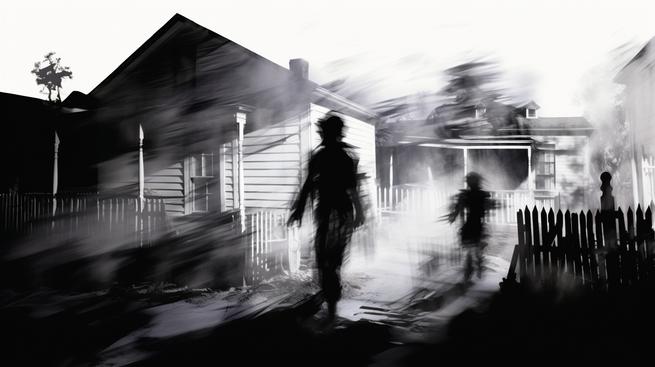
The Whaley House in San Diego, California, stands as a testimony to the adage “if walls could talk.” Completed in 1857 by Thomas Whaley, this Greek Revival edifice has become a mosaic of history and mystery, earning the title of America’s Most Haunted House. The Whaley family saga intertwines with a series of tragic events, casting a long shadow of spectral lore over the property.
Thomas Whaley constructed his family home on land that had once been the site of public gallows. The ghost of “Yankee Jim” Robinson, a man who met his maker at the end of a hangman’s noose on the site years before the house’s construction, is said to have taken up residence in the house, his heavy footsteps echoing through the halls.
The Whaley family themselves were no strangers to sorrow. The residence, which doubled as a courthouse and theater, witnessed the untimely death of Thomas Whaley’s young son, Thomas Jr., who succumbed to scarlet fever. Violet Whaley, one of his daughters, tragically took her own life in the house following a bout of depression after a failed marriage.
With such a tapestry of tragedy, it’s no wonder that the Whaley House turned into a hotbed for paranormal activity. Visitors and investigators alike have reported a cornucopia of ghostly encounters, from the sounds of a baby’s cry to the apparition of a woman in a long dress. The house seems to hold onto its past, with each creak and whisper telling the tale of lives once lived and lost between its walls.
Today, the Whaley House opens its doors to the curious and the brave, offering tours that peel back the layers of its haunted history. Whether it’s the spine-tingling evening tours or the after-hours paranormal investigations, the Whaley House invites guests to step right up and witness its spectral symphony firsthand. As the saying goes, seeing is believing, but in the Whaley House, it’s also about feeling the chill in the air and hearing the echoes of the past.
I heard the heavy footsteps of Yankee Jim stomping around upstairs in the Whaley House, and it totally freaked me out because no one else was up there! Then, I saw a sad-looking lady in an old-timey dress just vanish before my eyes.
Victorian Village

In the heart of San Diego, California, Heritage Park stands as a spectral testament to the Victorian era, where the past lingers in the form of ghostly whispers and ethereal presences. The park is a collection of historical buildings, each with its own tale and rumored to be inhabited by spirits from a bygone era. The Save Our Heritage Organisation (SOHO) played a pivotal role in preserving these architectural gems, rescuing them from the brink of demolition and creating a time capsule for future generations to marvel at—and perhaps encounter—the otherworldly.
Among the cluster of Victorian buildings, the Christian House commands attention as a hotspot for paranormal activity. Paranormal enthusiasts and ghost hunters often flock to this Queen Anne-style abode, hoping to catch a glimpse or a whisper from the spirit of a young woman, around 20 years of age, who is said to linger near the front door. Investigations by groups like the San Diego Paranormal Eye (SDPE) have employed tools like spirit boxes and dowsing rods, with the Structured Light Sensor (Xcam SLS) adding a technological edge to their spectral pursuits.
But the Christian House is not alone in its haunted reputation. The McConaughy House, which now houses the Coral Tree Tea House and Old Town Gift Emporium, has made a name for itself in the realm of the supernatural. The proprietors wear the house’s spirited nature as a badge of honor, inviting the curious to explore its Stick Eastlake architectural charm and perhaps encounter its unseen residents.
Not to be outdone, the Sherman-Gilbert House also holds mysteries of its own. Named after its builder, John Sherman, a relative of the infamous General William Tecumseh Sherman, this Stick Eastlake treasure has its share of shadowy sightings. While a concrete encounter remains elusive, the silhouette of a figure darting towards the building’s rear continues to ignite the imaginations of those who keep watch.
It’s worth noting that each of these Victorian structures was uprooted from its original foundation and transplanted to Heritage Park. This act of preservation may have brought more than just bricks and mortar to their new home; some believe it also carried the spirits of those who once dwelled within their walls.
Heritage Park serves as a bridge between the present and the Victorian era, offering more than just a walk through history. For those attuned to the supernatural, it’s a chance to cross paths with the park’s permanent, albeit incorporeal, residents. Whether through a shiver down the spine or the flicker of a shadow, the ghosts of Victorian Village continue to make their eerie presence known.
I heard that in San Diego’s Victorian Village, the old Christian House is crawling with ghosts, especially the spirit of a young woman who hangs out by the front door, and folks say she’s not the only one haunting the place. It’s pretty creepy, but also kinda cool, to think these old houses might be home to folks from way back when.
Elfin Forest
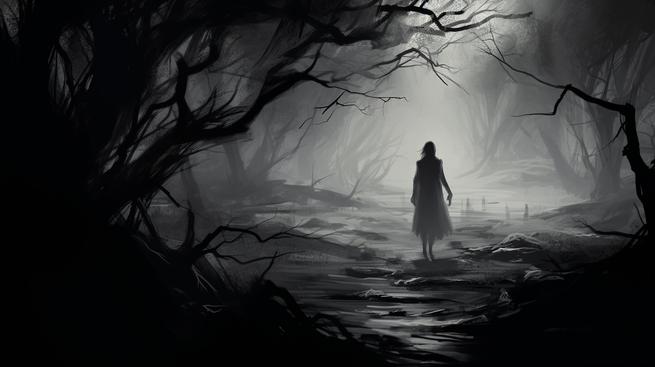
The Elfin Forest in San Diego, California, is shrouded in a tapestry of eerie tales and spectral legends. Nestled in the foothills of the Santa Rosa Mountains, this rural enclave has become a magnet for those seeking encounters with the otherworldly. The forest’s very name evokes a realm where the veil between the natural and the supernatural seems perennially thin.
Harvey Urban, a prominent dentist, unwittingly set the stage for the area’s haunted reputation when he acquired a 20-acre lot in 1959. The land, initially christened “Tooth Acres” by Urban’s jesting patients, was later renamed Elfin Forest in 1966, inspired by Francis Marion Fultz’s book, “The Elfin Forest of California.” Despite its enchanting beauty and rich biodiversity, the forest’s allure extends beyond its flora and fauna, spilling into the domain of the paranormal.
QuestHaven, often mistaken for a former mental hospital, is actually a religious retreat, yet it is indissolubly linked to the ghost stories of Elfin Forest. Internet whisperings have perpetuated the false narrative of its haunted hospital past, but the retreat remains a sanctuary of spirituality, not spooks. Still, the tales persist, painting QuestHaven as a hotspot for ghostly apparitions.
Local folklore also recounts the spectral presence of Gypsies in Spooks Canyon, engaging in occult practices. This narrative, while embellished, has roots in truth. The Harmony Grove Spiritualists, a community known for their psychic arts, indeed lived and practiced in the area, adding a layer of mystical intrigue to the forest’s history.
The tale of the lady in white has become a synecdoche for the myriad hauntings reported in Elfin Forest. She is a sorrowful specter, said to be responsible for numerous car crashes along Quest Haven Road. Her story is a quilt of tragedy and loss—her husband and son, killed while seeking land in San Diego, left her to wander the forest in eternal grief.
The ghost children of Elfin Forest, often described as Mexican or Native American, add a chilling element to the locale’s haunted tapestry. Stories tell of children’s spirits, angry and dazed, roaming the hillsides where they were purportedly buried upright. Their presence raises questions that have yet to find answers, leaving a haunting imprint on the collective consciousness of visitors and locals alike.
As with any region steeped in such lore, the truth behind Elfin Forest’s hauntings is often lost in a thicket of rumor and speculation. Yet, the forest continues to draw those who chase the thrill of a ghostly encounter or seek to unravel the mysteries that the whispering winds through the trees might hold. Whether fact or fiction, the haunted history of Elfin Forest has become an indelible part of San Diego’s cultural fabric, a place where the past seems to echo with every step into its shadowed depths.
I heard that if you wander deep into Elfin Forest at night, you might spot the lady in white mourning her lost family, and some say you can even hear the ghost kids playing in the trees, which is pretty creepy if you ask me.
Cosmopolitan Hotel
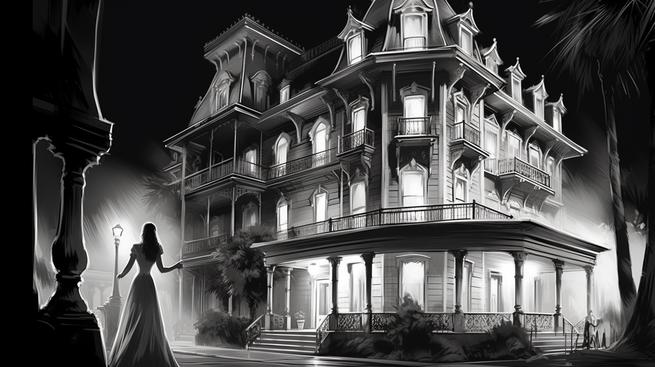
In the heart of San Diego’s historic district stands the Cosmopolitan Hotel, a beacon of eerie tales and ghostly encounters. Constructed between 1827 and 1829, the building first served as the residence of Don Juan Bandini, a cattle rancher with deep pockets and a penchant for rebellion. Bandini’s life wove a colorful thread through the tapestry of early Mexi-Cali culture, as he led uprisings and stormed the Governor’s office, determined to see his vision of governance realized.
The grand abode, crafted from over 10,000 adobe bricks and perched upon a sturdy foundation of river rocks, became a hub of high society, with Bandini throwing dance parties that set the whole town abuzz. These weekly gatherings had guests dancing the night away, as Bandini himself would cut a rug with the best of them, his daughters Ysidora, Josefa, and Arcadia, the belles of every ball.
However, as the winds of change blew through California, Bandini’s fortunes took a turn for the worse. With a heavy heart, he sold his dream home to cover debts, and thus began the property’s transformation. By 1869, Albert Seeley, a stage master with a head for business, converted the property into a bustling stagecoach stop and hotel, adapting it to the needs of travelers treking between Los Angeles and San Diego.
Through the years, the building underwent many metamorphoses, from Seeley’s Greek Revival touch to its brief stint as an olive factory, and then back to a hotel under the care of Bandini’s grandson, Cave Couts Jr. The property embraced the modern age with updates to electricity and gas, and by the 1950s, it donned the guise of the swanky Miramar, courting the era’s affluent travelers.
Despite many hands changing the reins, the Cosmopolitan Hotel, as it stands today, has been restored to its late 1800s splendor, a testament to its resilient and storied past. But the hotel’s history isn’t just etched in its architecture; it lingers in the air, with whispers of the otherworldly.
The spirit of Ysidora, Bandini’s daughter, reportedly haunts the halls, particularly favoring rooms four, five, and eleven. Guests report mischievous antics, such as lights flicking on and off and doors swinging open without a nudge. The “Lady in Red,” a benign specter, is rumored to linger in rooms four and five, her presence a crimson flash in the corner of one’s eye.
As the tale goes, Ysidora’s brush with death led to a fateful catch by Colonel Cave Johnson Couts, her savior who would become her husband. It seems she’s chosen to stick around, her spirit entwined with the fabric of the hotel that once was her family’s home.
In conclusion, the Cosmopolitan Hotel in San Diego is a treasure trove of history, with its walls not just recounting the past but echoing it. From Bandini’s rise and fall to the gentle hauntings of Ysidora, the hotel remains a bastion of the past, its stories as alive as the city itself.
I stayed at the Cosmopolitan Hotel and, no joke, the lights in my room started flickering all by themselves. They say it’s Ysidora’s ghost playing tricks, and I think I believe ’em now.
Tunnel 2

San Diego’s Tunnel 2, colloquially known as the “Faze Rug” Tunnel, carries a haunted reputation that chills the spines of locals and visitors alike. Legend has it that the echoes of the past reverberate through its dark, graffiti-laden walls, giving rise to tales of ghostly encounters and eerie sounds—tales that have turned this ordinary drainage passage into a magnet for thrill-seekers and paranormal enthusiasts.
The tunnel’s sinister story took root when a YouTuber named Faze Rug dared to venture into its depths, capturing on camera what many believe to be the essence of the supernatural. Since then, it has been a rite of passage for urban explorers to plunge into the belly of the beast and experience firsthand the unexplained phenomena that have become synonymous with Tunnel 2.
Whispers among the locals tell of a spine-tingling symphony—a woman’s screams and the haunting calls of a child searching for her mother—sounds that cut through the silence and suggest a lingering presence from beyond the veil. These auditory hauntings have fueled countless rumors, each more bone-chilling than the last. One such tale speaks of a tragic accident near the tunnel’s mouth, where a girl’s life was cut short, her spirit forever trapped within the tunnel’s confines.
Another macabre anecdote involves a couple’s fatal encounter, with the girlfriend meeting her untimely end, leaving behind a specter in the shadows of Tunnel 2. These stories, whether grounded in truth or borne of the collective imagination, have set the stage for a locale that is as much a character in its own right as the apparitions said to inhabit it.
Tunnel 2 is not merely a conduit for water but a canvas for the city’s dark folklore—a place where the ghosts of history seem to walk hand in hand with the living. Its one-way path into darkness calls to the brave, challenging them to stare into the abyss and face the unknown.
For those daring enough to set foot into this haunted haven, it is imperative to go armed to the teeth with flashlights and courage, for the veil between our world and the spectral realm grows thin within the confines of the Faze Rug Tunnel. Whether driven by a quest for adrenaline or a yearning to peel back the curtain on the mysteries that dwell within, visitors to San Diego’s Tunnel 2 are sure to leave with tales of their own—tales that will continue to feed the legend for generations to come.
I heard that some kid screamed in the Faze Rug Tunnel and never came out, like they’re still calling out in the dark or something. It’s super creepy, and people say if you listen close, you can hear whispers and stuff nobody can explain.
El Campo Santo Cemetery

El Campo Santo Cemetery stands as a testament to San Diego’s storied past, its soil rich with the tales of the departed. Established in 1849 within the confines of Old Town San Diego Historic Park, this sacred ground served as the final resting place for the city’s early denizens until 1880. Despite the tranquility that now blankets the area, it hides a tumultuous history beneath its surface.
The cemetery was once a much larger expanse, but now only 477 of the original graves remain visible. As San Diego’s living population burgeoned, the demands of a growing city encroached upon the sacredness of El Campo Santo. The march of progress took a ghastly turn when new roads were laid, and the cemetery itself became a crossroad between the living and the dead.
History tells a morbid tale of graves being unceremoniously relocated to make way for a horse-drawn streetcar line, which would later be replaced by a modern road. Many of the deceased were left undisturbed beneath the new thoroughfare, their final resting places becoming little more than an afterthought, their headstones no longer marking their presence. This callous act left the souls of the dead trapped under the road, igniting a series of unworldly disturbances that would chill the bones of even the most skeptical.
The area surrounding El Campo Santo soon became a hotbed for paranormal activity. Local residents and business owners reported a myriad of unexplained phenomena, from electrical oddities to alarms sounding without cause. Car alarms would blare in the dead of night, and vehicles would refuse to start when parked near the graveyard, as if the spirits were expressing their unrest.
Among the cemetery’s spectral residents is the infamous spirit of Yankee Jim Robinson, whose execution by hanging occurred on the land that would later become the Whaley House. His ghastly figure is just one of many apparitions witnessed gliding above the graves or vanishing into the night when approached. Visitors often speak of freezing cold spots, floating orbs, and shadowy figures that play tricks on the eyes and the mind.
El Campo Santo Cemetery continues to beckon those with a fascination for the paranormal, inviting the brave to explore its haunted history. Cameras in hand, many a guest has captured inexplicable images among their photographs, adding credence to the cemetery’s reputation as a haven for the supernatural.
Whether one seeks a brush with the otherworldly or simply wishes to pay respects to the city’s early settlers, El Campo Santo Cemetery remains a cornerstone of San Diego’s ghostly lore, its stories forever etched in the annals of the city’s dark history.
I went to El Campo Santo Cemetery at night and, swear to God, I saw car alarms go off for no reason and felt this super cold chill like someone was watching me. People say it’s haunted, and after that spooky stuff, I think they might be right.
Cara Knott Memorial Garden
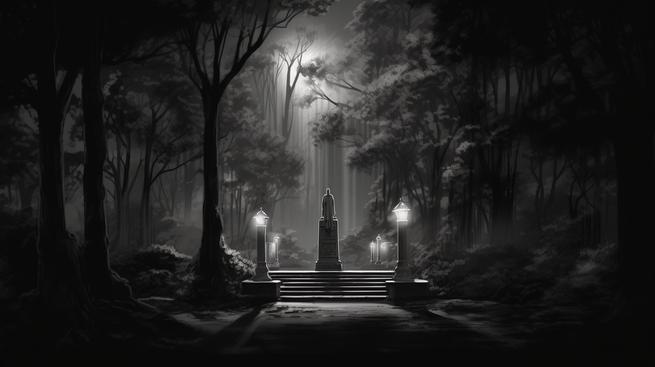
The Cara Knott Memorial Garden, nestled in San Diego, California, harbors a chilling past that sends shivers down the spine. In the winter of 1986, the tragic murder of 20-year-old Cara Knott by a California Highway Patrol Officer, Craig Peyer, sent shockwaves through the community. This heinous crime injected a deep-seated fear into the hearts of locals and cast a long, dark shadow over the trust once placed in law enforcement.
Cara’s untimely demise occurred near the intersection of Interstate 15 and Mercy Road, a spot that has since become synonymous with her memory. The site where her life was so brutally snuffed out is now marked by the San Diego Crime Victims Oak Garden, a serene space dedicated to the remembrance of lives lost to violent crimes.
The creation of this memorial garden was spearheaded by Cara’s bereaved father, Sam Knott, who poured his heart and soul into this labor of love. After nearly a decade of relentless advocacy, his vision finally materialized in 1996 when the oak garden was christened in his daughter’s honor. It was a poignant tribute, not only to Cara but also to the unbreakable bond between a father and his daughter.
The garden was later rebranded as the San Diego Crime Victims Memorial Garden, encompassing the collective grief and remembrance of numerous families who had walked a mile in the Knotts’ shoes. Scores of oak saplings, nurtured from acorns by the Knott family, were planted, transforming the garden into a living monument that grew alongside the healing of the community.
As years rolled by, the memorial garden flourished into a sanctuary, a place where the whispering oaks stand as silent witnesses to the memories of those whose lives were stolen. The garden also draws those curious about the supernatural, as it is rumored to be haunted by the restless spirits of the departed.
The bridge under which Cara Knott’s body was discovered has become an eerie landmark. Some say it’s a place where the veil between worlds is thin, and the echoes of past atrocities still linger in the air. Visitors to the memorial often feel an overwhelming sense of sorrow, a testament to the indelible mark that Cara’s story has left on the fabric of San Diego’s history.
Today, the Cara Knott Memorial Garden stands as a testament to the fragility of life and the enduring strength of love. It serves as a stark reminder that sometimes the monsters we fear lurk not in the shadows but hide in plain sight, wearing the garb of protectors. This garden is not just a collection of trees and plaques; it is a mosaic of broken hearts, a synecdoche for loss and remembrance, inviting us to tread softly and honor the silent tales of the souls it cradles.
I heard that when you walk through the Cara Knott Memorial Garden, some folks feel a chill and swear they can hear whispers, like the garden’s keeping Cara’s story alive. It’s super spooky, almost like the ghosts of the past are hanging around in those quiet oaks.


